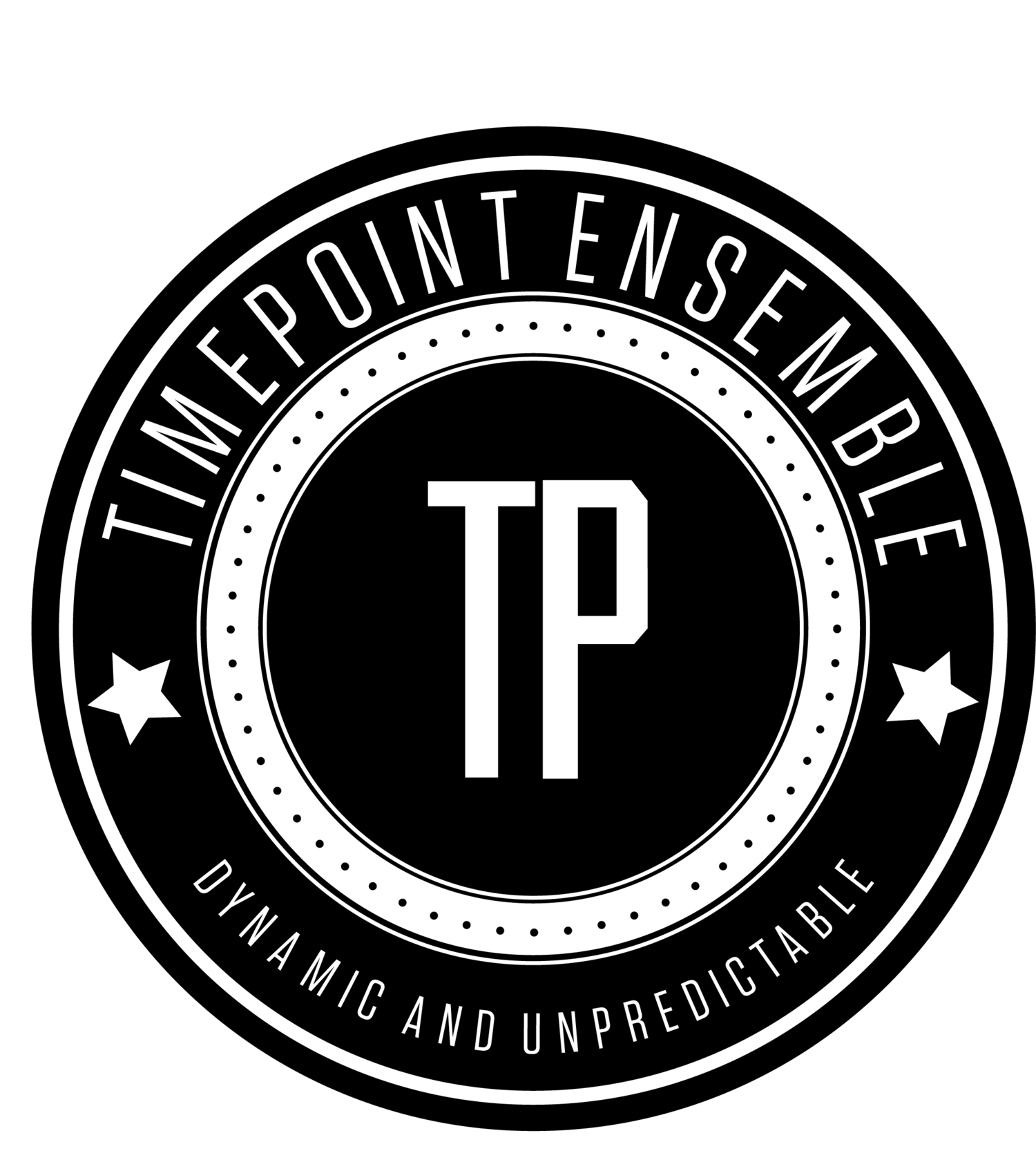Timepoint Ensemble: Sound of Silence
October 22, 2016 @ Calgary Public Library Central branch Dutton Theatre
The Timepoint Ensemble has already shown ambition in short life by bringing their music everywhere they can, including, bars, art galleries, and schools, in addition to the more usual classical music haunts. After playing the Mount Royal Conservatory last month, the enterprising group shows up downtown for a show combining music and film.
Any show at the current iteration of the CPL was not going to be big on glamour, and this was no exception. The rudimentary lighting made the opening and ending of show less then slick, a situation slightly exacerbated by the choice of throwing the crowd into the action without any commentary or introduction to the experience. There wasn’t even a moment to introduce the performers in this expanded version of the ensemble, which included several busy Calgary freelances.
However, the experienced music lovers in the crowd (I overheard complaints in the lobby about the delay in the Land’s End Ensemble season) probably didn’t care about any of that. They were here to experience some interesting new out of the way music, and the crackerjack players of Timepoint didn’t disappoint.
The audience was treated to three very different experiences in this hour long show. The first was Cypriot/Dutch composer Yannis Kyriakides’s work The Arrest. To call this a ‘film’ is a bit of a stretch, as it consists entirely of white text on a black screen. Kyriakides, who has an interest in combining electronic and acoustic sounds in his work, has created a dozen of these multimedia experiences, and this one is surprisingly gripping. The ensemble, augmented by electronics, and sound effects (like a dog barking) doesn’t always mark every new sentence, but it does comment on the action at key points. (The performance had to be carefully synced to the film, which for the most part, worked precisely.) The story, a somewhat fantastical rendition of someone who is seemingly about to be arrested by a tyrannical regime, took some concentration on the part of the audience to follow. The bit that connected the word “copulate” and “cop” really took the many by surprise. It is an example of the intense wordplay of the author, experimental French writer of the 60s & 70s, George Perec. (He once infamously wrote a whole novel without the letter e.)
The second work was easiest to swallow, but even this was not too sugary. The Gift, a film festival darling, is easy to like, with its faux simple drawing style of its protagonists and its story about love found, and lost. The gift refers to giving love to another, represented here by a blue dot taken out of the chest of the man. Despite a funny breakup, and the later despair, we still have a happy ending. The music continues through the credits for a reason, however, and the viola joke at the conclusion announces things might not be as harmonious as they seem.
The last piece, was the longest and most interesting of the three. Presented in three short episodes, Odboy and Erordog is a phantasmagoria of childlike hand drawn characters, old computer text, and scrolling gameplay that feels like an old black and white film being beamed down to an analog antenna from outer space. Anyone who appreciates the aesthetics of 1980s video games, either green screen glowing text based ones, or early scrolling based adventure games will be immediately attracted to this, and Marcus Fjelleström has emphasized the dark, brooding mood by his minimalist black and white presentation. Our heroes undertake quests to do certain actions by a mysterious figure, much as in this early games, and these episodes play like a meditation on childhood fantasies and nightmares, The sequence where Erordog rides a balloon into space is probably the most traditional sort of music in the show, giving the evening’s final moments an almost Danny Elfman / Tim Burton sort of vibe.
It is not really a criticism to suggest that a performance of the music without the visual element probably wouldn’t hold too much interest, all three composers specifically thought about how to connect their music with the visuals, and all have form working with combining electronic and acoustic musical materials.
If you were really paying attention to the musical performances, you noticed that they were very good. Occasionally, especially during The Arrest I felt a little lag between the action on screen and the music coming from the ensemble. The trickier problem, at least to my ears, was the question of balance. In the first work, the electronic portion of the music, coupled with an often very busy (but expertly played) marimba part, meant the other instruments were at a disadvantage, especially the violin and bass. I also found the high level of the sound during the final work to be a bit much, especially since much of it was static or bursts of white noise (accompanied on screen by flickers and distortions on screen, to give a kind of old-time “analog transmission” effect.)
Overall, this performance was an intriguing (if short) multimedia experience. I would not be surprised if this sort of performance became a regular part of Timepoint’s future seasons.
